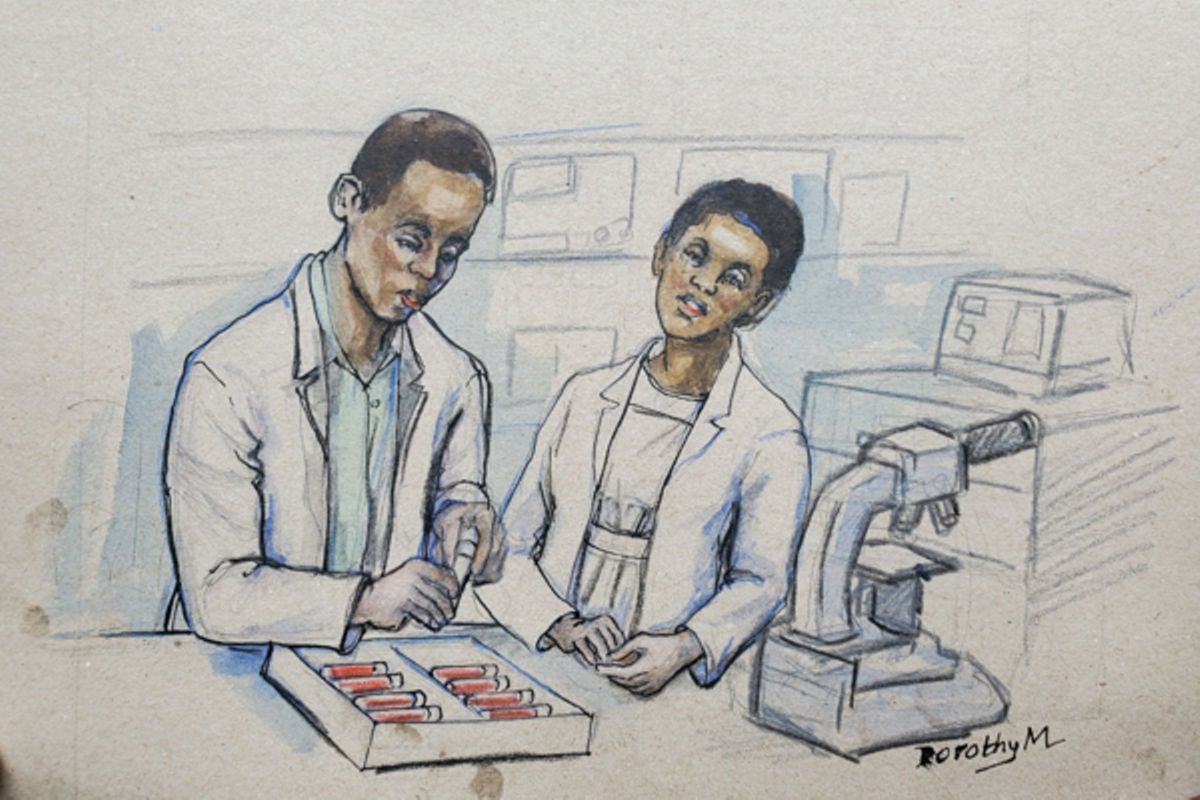Infection
The laboratory process of diagnosing HIV infection
In a civil case it is usual to agree on undisputed facts. And so when Mr Denis Okaka instituted legal proceedings against AAR Health services for falsely diagnosing him as HIV positive, when in fact he was HIV negative, it was agreed, as a fact at scheduling conference, that a laboratory established and run by AAR Health Services conducted an HIV test on Mr Okaka on January 29, 2007 and that the result for the test turned out positive.
It was not in dispute that Mr Okaka was seen by a doctor employed by AAR who sent him to the laboratory to have the test carried out. After the test was carried out and the results came out positive, it was also not in contention that Mr Okaka was not counseled but simply given the results by the doctor.
The doctor advised him to go back for a confirmatory test after three months. Mr Okaka told court that he was devastated after receiving the results and broke down in tears.
Second test results
Mr Okaka further told court that he went back to the same laboratory in May 2007 for another test whose results also turned out to be positive. However, on this occasion he was not given a report.
The same doctor advised him to take a CD4 test after 5 months, which test he carried out in November 2007. The patient told court that thereafter he lived under the belief that he was HIV positive.
It was not until May 2008 when he visited another clinic where three tests were conducted on him which confirmed that he was HIV negative but hypertensive.
The main elements of the medical negligence alleged in this suit were that the staff of AAR did not follow the proper procedure of conducting the HIV test on Mr Okaka which resulted into a wrong diagnosis.
It was alleged that Mr Okaka was only subjected to one test on each of the two occasions when the staff of AAR should have known that carrying out one procedure during a test for HIV is never conclusive of a person’s HIV status when the test comes out as positive.
Independent confirmatory test
That the staff of AAR failed to carry out an independent confirmatory test when the first test in was positive; and further that Mr Okaka was not subjected to a pre and posttest counseling as is recommended.
The staff of AAR were therefore accused of failure to exercise due care when they conducted HIV tests on Mr Okaka in January 2007 and in May 2007, resulting into a false positive HIV diagnosis.
AAR denied flouting any procedure when conducting the HIV tests on Mr Okaka but stated that the proper procedure was followed when carrying out the HIV tests on the client and, therefore, there was no misdiagnosis. AAR relied on the fact that the subsequent test carried out on the client’s sample was positive, as was the first result.
AAR denies any negligence
AAR denied any negligence on its part. To court both parties in the case relied on the policy and accompanying policy guidelines issued by the Ministry of Health. Court agreed with Mr Okaka’s lawyers that the policy guidelines were applicable to their client even when AAR’s lawyers submitted that the guidelines were only applicable to policy makers and planners for HIV/AIDS programmes.
This was an attempt by the lawyers to tell court that AAR was not bound by the guidelines. The policy and policy guidelines provide that an HIV test is done using two rapid kits either using the parallel method or using the series method.
The procedure using the parallel algorithm for rapid HIV testing is as follows;
a) Test the specimen using two kits of different antigenic specificity at the same time.
b) If both rapid tests give the same test result, give the test result as it is.
c) If the results are different, use a third test as a tie-breaker and give the client the result as shown by the third test.
The rapid HIV test using the series method is as follows;
a) Test the specimen using one rapid test that is highly sensitive (more than 98%)
b) If the result is negative, report as negative
c) If the result is positive, test the specimen using a second rapid test that is of a different antigenic specificity
d) If the result is positive, report as positive
e) If the result is negative, test the specimen using the ELISA test, which will then act as the tie-breaker.
f) If the result is positive, report as positive
g) If the result is negative, report as negative.
A person should only be given a positive HIV if it has been confirmed by two different methods, or if the two methods give different results, then a third method, known as a tie-breaker should be used to establish the HIV status of the person. To court it was clear that performing an HIV test is a laboratory process and it is not indicated anywhere, or required or even expected that the client has to be privy to the laboratory process. The client is only supposed to be informed of the result or report. What is required is that before reporting, the laboratory personnel must go through the above process.

